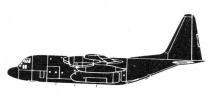Incident Overview

Description
The aircraft departed the Stockholm/Bromma airport for a flight to the stersund/Frsn F4 airport. The co-pilot was the flying pilot. As the aircraft approached stersund the crew was cleared to continue directly towards the airport to carry out a visual approach to runway 30. The tower reported the surface wind to be 220 degrees at 23 knots (approx. 42 km/h) and then gave them landing clearance. The crew experienced considerable turbulence on final and noted on their instruments that the wind was from the south-west at 50 knots. The wind decreased as they approached the threshold however the turbulence persisted. At touchdown the aircraft bounced and the co-pilot pushed the control column forward to lower the nose. At about the same time the aircraft began to roll to the right causing the co-pilot to correct with a left aileron. The commander felt that the aircraft bounced once again but this time only on the right main gear. The aircraft started to roll abruptly to the left and when it then touched down on the left main gear the crew experienced that the aircraft also began to swerve to the left. The commander, who was now also on the controls, extended the airbrakes at this time. When the crew disembarked the aircraft after parking at the terminal they observed that the left wing tip and aileron had received substantial damage through contact with the runway during landing. Causes The accident was caused by the flying pilot not being able to correct for the strong and gusty crosswind and turbulence associated with the landing and touchdown. A contributing factor can be that the air brakes were extended when the aircraft was not on the ground.
Primary Cause
The flying pilot’s failure to correct for the strong crosswind and turbulence associated with the landing and touchdown.The flying pilot’s failure to correct for the strong crosswind and turbulence associated with the landing and touchdown.Share on:





